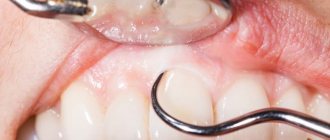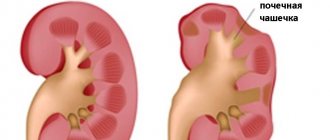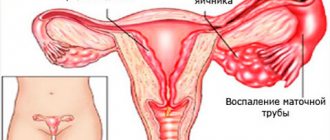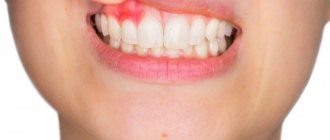Causes
Thrush is an infectious disease caused by opportunistic microorganisms – fungi of the genus Candida. In small quantities, they can be present in the mouth, vagina and colon of a healthy woman without causing discomfort or itching. However, in some cases (in particular during pregnancy), active growth of this fungus may be observed due to a decrease in the level of lactobacilli that form the microflora of the vaginal microflora - in connection with this, suitable conditions are created for the appearance of thrush.
Thrush during pregnancy, treatment
Why does thrush occur so often in women during pregnancy and what are the reasons for its appearance?
- Immunological changes.
In the first trimester, most expectant mothers note a deterioration in immunity. It is an important condition for normal childbearing. If there is no decrease in the body's defenses, there is a danger of termination of pregnancy: in this case, the mother's immune system perceives the fetus as a foreign object and rejects it. Due to deterioration of immunity, the growth of pathogenic and opportunistic microflora is possible - in particular, the Candida fungus. - Hormonal changes in the body. An increase in the production of the hormone progesterone, which is observed during pregnancy, leads to changes in the mucous membrane and an increase in the acidity level of the vagina. This creates optimal conditions for the growth of Candida fungus.
- Improper intimate hygiene. If, while washing, a woman directs a stream of water from the anus to the pubis, this promotes the transfer of intestinal microflora to the vagina. As a result, the healthy physiological ratio of lactobacilli and opportunistic microorganisms is disrupted, which causes vaginal dysbiosis to develop. A decrease in the number of lactobacilli leads to a change in vaginal pH to 4.5 or higher, which can result in the development of thrush.
Suppositories for thrush during pregnancy
- Unbalanced diet. If the expectant mother’s diet contains a large amount of simple carbohydrates (in particular, rich yeast baked goods and sugar), the likelihood of developing thrush increases.
- Intestinal dysfunction. Many women (up to 70%) expecting the birth of a baby experience constipation and also suffer from intestinal dysbiosis. These problems lead to stagnation of feces and intoxication of the body, as a result of which the expectant mother may develop both intestinal and vaginal candidiasis.
In addition to the above reasons, there are the following prerequisites for its development:
- Stress.
- Diabetes mellitus and other endocrine disorders.
- Chronic inflammatory processes in the pelvic organs.
- Wearing inappropriate underwear (tight synthetic panties, thongs).
Risks of the influence of candidiasis (thrush) on pregnancy
Any infection of the genital tract, like other types of infections, is very dangerous during pregnancy. Vaginal candidiasis is considered the most common among sexually transmitted infections. Risk factors associated with candidiasis in pregnant women are:
- there is a risk of fetal infection during pregnancy;
- the risk of premature birth increases;
- the risk of oxygen deficiency in the fetus increases, the risk of giving birth to a baby with critically low body weight;
- Premature loss of amniotic fluid is often observed;
- the mother may develop endometritis, candidiasis
Symptoms
There is a persistent misconception that thrush can be regarded as a sign of pregnancy in the early stages. However, this is incorrect. In fact, candidiasis does not occur in all expectant mothers, so it cannot be considered as a 100% sign of pregnancy.
Symptoms of candidiasis are as follows:
- White (less often yellowish) vaginal discharge, reminiscent of cottage cheese or cream and having a sour odor. Rarely, there is a thin, watery discharge with a sour odor.
- Redness and swelling of the vaginal mucosa caused by an inflammatory process.
- Vaginal itching, dryness and burning, most noticeable when urinating, during and after sex.
What to do if pregnancy occurs due to thrush
The fact of the presence of thrush can only be established in a medical institution. The presence of similar symptoms in a pregnant woman is a reason to immediately contact a gynecologist, because thrush carries serious risks for the fetus. It must be said that in pregnant women it occurs 3 times more often and requires immediate treatment. In any case, if a woman, pregnant or not, suspects that she has candidiasis (thrush), only a doctor can prescribe an adequate examination and accurately make a diagnosis in order to identify masked infections, if any, and carry out treatment as correctly as possible.
Depending on the stage of the disease, the doctor prescribes local or combined drug treatment. These can be antifungal vaginal suppositories, ointments, oral medications in combination with dietary adjustments. Remember, even with similar symptoms, you should not resort to self-medication; not only your health, but also that of your child may be at stake.
Why is thrush dangerous during pregnancy: consequences of candidiasis
Despite the fact that candidiasis during pregnancy in most cases does not harm the fetus, the disease still needs to be treated. This must be done, if only because due to dryness and itching in the vagina, a woman’s quality of life is significantly reduced: the expectant mother becomes irritable and nervous, and in some cases, the unpleasant sensations can be so intense that she cannot sleep normally. Such stress leads to an increase in the concentration of adrenaline and cortisol in the blood of the expectant mother. An increase in the level of these hormones can cause spasm of blood vessels, which can lead to oxygen starvation of the fetus. Fortunately, such an unobvious consequence rarely happens.
The occurrence of thrush in the early stages of pregnancy is fraught not only with a decrease in the quality of life of a woman, but also with the fact that it is during the first trimester that the formation of most organs and systems of the embryo occurs.
Therefore, stress and a constant feeling of discomfort can cause disturbances in the formation of fetal organs.
It is extremely rare that the mucous plug, which covers the cervix and prevents pathogenic microorganisms from entering its cavity, is not fully formed in the first days of pregnancy. This means that the possibility of pathogens entering the uterine cavity cannot be ruled out. However, such cases are very rare and are rather the exception.
As for the development of candidiasis in later stages of pregnancy, in this case the possibility of the following problems must be taken into account:
- Inflammation of the vaginal walls causes them to lose their elasticity. When a child passes through the birth canal, there is a risk of rupture.
- Due to an imbalance in the vaginal microflora, the expectant mother may develop other infectious diseases.
- Thrush can lead to the progression of cervical erosion. In turn, the cervix with erosion (if we are talking about it, and not about ectopia) stretches worse - this can cause it to rupture.
- In the case of a natural birth, the baby may become infected with thrush when passing through the vagina. If this happens, the disease is usually localized in the mouth or on the skin of the newborn.
Expert opinionInfection of an infant with candidiasis during its passage through the birth canal can be especially dangerous for premature infants. The fact is that such babies have an underdeveloped immune system, so even a relatively harmless infection can be very difficult.
Obstetrician-gynecologist of the highest category Oksana Anatolyevna Gartleb
- Extremely rarely, the disease can affect placental blood flow, infect the amniotic membranes and lead to premature birth. Fortunately, this happens infrequently and is mainly the result of additional infections.
Thrush during pregnancy and its treatment
Treatment methods
The fungus Candida albicans is an opportunistic microorganism. It is always present on the mucous membranes: in the mouth, intestines and vagina, so it is impossible to completely get rid of it, and it is not necessary. Usually the fungus does not manifest itself in any way. But with hormonal fluctuations or against the background of a compromised immune system, it begins to multiply intensively - candidiasis appears. During pregnancy, it must be treated under the guidance of a doctor so as not to harm the baby.
Let's figure out what methods to combat thrush can be used in each trimester.
First trimester
In the early stages of pregnancy, treating thrush is not so easy: at this moment the baby’s vital organs begin to form, so the choice of medications is limited. You can only use local remedies - vaginal suppositories, suppositories or creams. Typically, gynecologists prescribe drugs based on natamycin. In this case, the fungus may be resistant to permitted substances, so it will be difficult to cure candidiasis.
Treatment of thrush in the first trimester should not only alleviate the symptoms of thrush, but also stimulate local immunity and restore the vaginal microflora.
Second trimester
For the treatment of thrush in the second trimester, the range of approved drugs is wider: drugs based on clotrimazole can be used. The choice of a specific medicinal substance should always remain with the doctor. Starting treatment on your own is dangerous: this can lead to a recurrence of thrush and even pregnancy complications.
Third trimester
In the third trimester, the fetus is already fully formed, so the list of approved drugs is expanding. At this time, most local forms of antimycotics or antifungal drugs can be used with caution. At this time, it is especially important to completely get rid of the disease, otherwise during childbirth you can infect the baby with a fungus.
Throughout pregnancy, the emphasis in the treatment of thrush is on local medications: vaginal tablets, suppositories, suppositories, creams and sprays. Epigen Intim spray has proven itself well as part of complex therapy for pregnant women. Its active ingredient - activated glycyrrhizic acid - reduces itching, reduces inflammation and increases local immunity. The sprayer accurately doses the product, and a special nozzle allows for deep injection of the drug. The drug is approved at any stage of pregnancy, as well as during lactation. An antifungal drug helps combat thrush, and Epigen Intim spray can quickly cope with unpleasant symptoms of the disease and prevent relapses.
Treatment
Treatment for candidiasis depends on the intensity of the disease and the trimester of pregnancy. Treatment of thrush during pregnancy is medicinal and should only be prescribed by an obstetrician-gynecologist. Self-medication at this time is dangerous, as a woman unknowingly can harm the child. For therapy to be effective, not only the expectant mother must be treated, but also her partner.
Expert opinion
During treatment, it is recommended to abstain from sexual activity or use barrier contraception. The disrupted vaginal biocenosis observed with candidiasis provokes a decrease in local immunity, so pathogenic agents can more easily penetrate the genital tract of the expectant mother.
Obstetrician-gynecologist of the highest category Oksana Anatolyevna Gartleb
Treatment of thrush during pregnancy
Treatment with many medications during pregnancy is contraindicated, therefore, if thrush occurs, treatment options should be discussed with the treating gynecologist. It is impossible not to treat the fungus. Thrush can spread to the throat, esophagus and intestines, leading to digestive problems.
Sometimes cases of thrush are severe enough that they cannot be cured with natural remedies alone. In this situation, the doctor, despite pregnancy, prescribes antifungal medications that regulate the level of Candida in the woman’s body.
It is important to note that pregnant women should not take fluconazole: some studies show that this drug causes birth defects. Most antifungal drugs that enter the mother’s blood have a negative effect on the fetus, so the doctor’s medication prescription is often aimed at local treatment (creams, suppositories).
But even vaginal products cannot be purchased without consulting a gynecologist.
Effective medications and remedies for thrush during pregnancy
For the treatment of thrush in the early stages of pregnancy (in the first trimester), local remedies are mainly used - suppositories, vaginal tablets, solutions, ointments and creams. Compared to drugs for oral administration, the active components of drugs for topical use do not penetrate the woman’s systemic bloodstream and, accordingly, do not affect the internal organs of the fetus, which are at this time at the stage of formation. In the second and third trimester, most of the baby’s organs and systems are already formed, so if necessary, the doctor can advise taking a wider range of medications without fear for the child’s health.
Causes of thrush
Suppositories for thrush during pregnancy
In the treatment of this disease, vaginal suppositories are actively used. Their main active ingredients may be natamycin, nifuratel, povidone-iodine, clotrimazole, nystatin.
- Natamycin is not absorbed into the systemic circulation through the mucous membranes, so suppositories with this active component are most often prescribed to expectant mothers if they have candidiasis. According to research conducted at the Research Center for Obstetrics and Gynecology at the Russian Academy of Sciences, drugs with natamycin are one of the most effective treatments. However, only a doctor should prescribe them.
- Products containing nifuratel are used only in cases where the potential benefit outweighs the possible harm to the fetus. This is due to the fact that the active component of such suppositories is able to penetrate the placental barrier. Therefore, in no case should you prescribe such drugs yourself: this can only be done by a doctor if the disease does not go away.
- Povidone-iodine is able to cross the placental barrier, so suppositories with this active component are prescribed to pregnant women extremely rarely and only in cases where the expected positive effect outweighs the potential harm. Treatment of candidiasis using drugs containing povidone-iodine should be carried out under the strict supervision of a physician.
- Suppositories with clotrimazole are usually not prescribed to pregnant patients in the 1st trimester. In the 2nd and 3rd trimester, the use of suppositories with clotrimazole is permitted only as prescribed by a doctor.
- Nystatin penetrates into the bloodstream in small quantities. Therefore, suppositories containing this active component are usually prescribed to pregnant women only if the potential benefit outweighs the possible harm. Such suppositories can only be used under the supervision of a doctor.
Cream or ointment for thrush during pregnancy
How to treat thrush during pregnancy, besides suppositories?
For this purpose, vaginal creams and ointments are used, the main active substances of which are usually butoconazole nitrate, clotrimazole, etc.
These products are prohibited for use in the first trimester. They are used exclusively in the second and third trimester and only after prescription by a doctor.
In addition to external remedies prescribed by a doctor, you can use the Gynocomfort restorative gel. Specialists from the pharmaceutical company VERTEX worked on its creation; the gel has a full list of necessary documents and certificates. In addition, he underwent clinical studies conducted at the Department of Dermatovenereology with the clinic of St. Petersburg State Medical University under the leadership of Ignatovsky A.V. and Sokolovsky E.V. During the study, it was found that this product is highly effective and can be used as an adjuvant in traditional drug therapy for dysbiotic vaginal conditions (including candidiasis). The gel is well tolerated by patients and does not cause allergic reactions. The product contains active ingredients such as lactic acid and tea tree oil. In addition to the antimicrobial effect, the restorative gel helps restore the normal microflora disrupted during the treatment of thrush and maintains it at a physiological level, preventing the risk of remission of the disease. In addition, it quickly helps to cope with itching and burning in the intimate area.
Thrush during pregnancy, how to treat it
Tablets for thrush during pregnancy
In the treatment of thrush, an important role is played by vaginal tablets. They are usually not prescribed in the first trimester of pregnancy. As for later periods, the use of such drugs should be carried out under the supervision of a doctor, and only in cases where the potential benefit outweighs the possible harm. Like suppositories, they are inserted into the vagina using an applicator; however, unlike suppositories, the tablets are completely absorbed into the mucous membrane and after using them, fewer marks remain on the underwear. The active ingredients of tablets and suppositories are usually the same.
Chlorhexidine and Miramistin
These antiseptics are prescribed for irrigation of the vaginal walls using a spray. During pregnancy, chlorhexidine and miramistin are used only after consultation with a doctor.
Folk remedies
Many women, while carrying a baby, prefer to treat thrush with traditional medicine, as they fear that the medications may harm the baby. However, you need to understand that “grandmother’s” methods are rarely effective, and their long-term use can aggravate the situation. Therefore, if you are wondering “How to get rid of thrush during pregnancy using traditional medicine?”, be sure to consult your doctor about using these methods.
Douching with chamomile and soda for thrush during pregnancy: benefit or harm?
There is a widespread misconception among people about the effectiveness of douching with a soda solution or chamomile decoction. However, douching is extremely undesirable because it leads to the washing out of beneficial vaginal microflora.
Tea tree oil for thrush during pregnancy
Tea tree oil has antiseptic, antimicrobial and drying properties, which is why it is often used to treat candidiasis. It is part of the Ginocomfort washing gel, which can be used for daily washing during pregnancy.
Thrush during pregnancy, how to treat
Pregnancy and thrush in a newborn
Candidiasis is a common disease in infants. It is characterized by the appearance of white plaque in the form of spots on the oral mucosa. There may be noticeable inflammation around these spots, and redness underneath the white coating. It is this symptom that distinguishes thrush from ordinary white plaque. Only a doctor can prescribe medicine for a baby. During treatment you need to adhere to some rules:
- treating the mucous membrane with a baking soda solution after each feeding
- applying ointment to the surface of the nipple and areola area to treat thrush after feeding
- changing your diet if the doctor deems it necessary.
Nutrition for thrush
The expectant mother should carefully monitor her diet. It is advisable to avoid baked goods, sweets, ketchup, mayonnaise, fermented cheeses, white rice, canned food, smoked, pickled and fried foods, vinegar and soy sauce, alcohol (especially beer), kvass and coffee. These products are generally not recommended for pregnant women, especially if they have thrush.
It is advisable to diversify your diet with fresh vegetables, poultry, fish, and wholemeal bread.
Special attention should be paid to fermented milk products. Unlike whole milk, which is not advisable to consume if you have thrush, kefir, natural yogurt and cottage cheese have a beneficial effect on the condition of the vaginal and intestinal microflora.
Diagnostics
A pregnant woman has characteristic vaginal discharge - leucorrhoea. They are plentiful, white, and have a consistency similar to diluted sour cream. Therefore, based on only one symptom, it is impossible to determine thrush in pregnant women - you must take a smear.
Using a gynecological speculum, the doctor will examine the mucous membrane of the vagina and cervix, evaluate the nature of the discharge and check for inflammation. Will take a swab. The analysis determines the level of leukocytes and the presence of fungus.
For recurrent vulvovaginal candidiasis, a bacteriological culture may be required. It will identify the pathogen and its sensitivity to various drugs.
Disease prevention
To protect herself from the appearance of thrush, the expectant mother should give preference to loose cotton underwear, monitor her diet, stop using panty liners frequently, worry less and devote more time to rest, undergo a gynecological examination in a timely manner and take a smear for analysis.
An important role is played by observing the rules of personal hygiene. You need to wash yourself daily using special products: for example, Ginocomfort washing gels. It contains lactic acid, which allows you to maintain the balance of microflora at an optimal level, as well as sodium lactate, tea tree oil, chamomile extract, panthenol and bisabolol. These active components promote gentle cleansing of the intimate area and have an antimicrobial and antiseptic effect.
Thrush during pregnancy in women
Sources:
- FEATURES OF PREGNANCY, CHILDREN AND THE POSTPARTUM PERIOD IN PREGNANT WOMEN WITH VULVOVAGINAL CANDIDIASIS. Kupert A.F., Akudovich N.V., Kupert M.A. // Siberian Medical Journal (Irkutsk). – 2008. – No. 6. – P. 27-29.
- PERINATAL OUTCOMES IN VULVOVAGINAL CANDIDOSIS. Akudovich N.V., Kupert A.F., Vetokhina A.V. // Acta Biomedica Scientifica. – 2004. – No. 2. – pp. 14-17.
- VULVOVAGINAL CANDIDIASIS AND PREGNANCY. Akudovich N.V., Kupert A.F. // Siberian Medical Journal (Irkutsk). – 2004. – P. 38-39.
- Pregnancy and vaginal candidiasis: current state of the problem (literature review). Karapetyan, T. E. // Gynecology. - 2008. - No. 2. - P. 4–8.
- Vulvovaginal candidiasis in pregnant women: modern approaches to treatment. A.K. Mirzabalaeva // Gynecology: a magazine for practical doctors. - 2005. - T. 7, No. 4. - P. 236–240.
- Vaginal candidiasis during pregnancy. O. A. Peresada [and others] // Medical news. - 2004. - No. 6. - P. 91–93.
Factors contributing to the appearance of candidiasis (thrush)
Modern medicine has vast experience and the latest means of diagnosis, treatment and prevention of candidiasis, but the incidence in pregnant women does not decrease, but increases. The reasons for this, according to recent research, are the following factors:
- constant stress, irritability (especially in young women);
- unfavorable environmental factors;
- overwork;
- violation of food culture and product quality.
During pregnancy, women are much more susceptible to the above circumstances, so infections find weak points in this category of patients. Uncontrolled use of antibiotics has a huge impact on the increase in the incidence of candidiasis.
Popular questions
Thrush tormented me.
She was last treated in July. The doctor prescribed fluconazole tablets for me and my husband on days 1, 3, 7 and 10, one each, bactistatin, and Vaginorm suppositories. I inserted candles, but it seems to me that after them the process worsened. And here comes the itching and milky discharge again. Tell me, please, what should be treated? Previously, Pimafucin suppositories were prescribed during pregnancy. Hello! Considering the recurrent course of the disease, I recommend taking an analysis - culture for nonspecific microflora with determination of sensitivity to antibiotics. This will allow you to correctly prescribe the antifungal drug. And then it is necessary to carry out the stage of restoring the microflora and balancing the pH of the environment in the genital tract. For this purpose, Gynocomfort gel with tea tree oil is suitable, 1 dose once a day for up to 10 days.
I have constant relapses of thrush, which was not prescribed to me during these two months, and I took clotrimazole suppositories and a fluconazole tablet, even 2, then clindacin 6, but I took a smear, it did not go away, the only symptoms were a terrible severe burning sensation. They prescribed nystatin suppositories and tablets, but it was all useless. Now I have been prescribed pimafucin tablets and suppositories. Nothing helps, I even bought pharmaceutical lactacid, but I still have a burning sensation, help, I can’t do this anymore.
Hello! For properly planned therapy, it is necessary to know the sensitivity to antifungal drugs and the possible combination with other pathogenic microorganisms. You need to undergo a culture test for nonspecific microflora with determination of sensitivity to antibiotics and a PCR test for STIs. Next, carry out the stage of restoring the microflora of the genital tract.
Hello, I have a pressing problem, acute thrush has appeared, I can’t get to the doctor at the moment because... I’m in another city, and I have to leave in 10 days, I can’t stand it anymore, there’s terrible itching, curd-like discharge (yellow), it hurts to go to the toilet. Yesterday I bought a Flucostat tablet, took it at night, in the morning it doesn’t hurt to go to the toilet, the discharge has decreased a little, but the itching torments with the same intensity, and the labia are swollen. They suggested that I could use pimafucin suppositories. Tell me what to do?
Hello! You can use your remedy, and upon return, be sure to conduct examinations and consult a doctor.
I had thrush, took fluconazole and took a course of candidum b6, to restore the flora I use gynocomfort tea tree, can it be combined with acylact, or are they the same thing? How many days after the recovery course can the tank be cultured?
Hello!
It is possible to combine these products, since Gynocomfort gel with tea tree oil provides an optimal pH environment in the genital tract and contains lactic acid, and the suppositories contain lactobacilli. Cultures are taken 3-4 days after completion of treatment or after the next menstruation. For an accurate diagnosis, contact a specialist
Vaginal candidiasis and pregnancy
IN
Currently, the frequency of purulent-inflammatory diseases in obstetrics does not have a clear tendency to decrease. In many countries of the world, including Russia, there has been an increase in vaginal infections, which firmly occupy a leading place in the structure of obstetric and gynecological morbidity [1, 2].
The introduction of modern technologies into clinical microbiology has made it possible to expand research and show that the negative impact of environmental factors on the microflora of the macroorganism leads to a variety of pathologies of both inflammatory and non-inflammatory origin. Despite significant advances made in the diagnosis, treatment and prevention of vaginal dysbiosis, their frequency does not have a clear downward trend. The latter is also associated with the increase in immunodeficiency conditions against the backdrop of deteriorating environmental conditions, poor nutrition, frequent stress, and uncontrolled use of medications, primarily antibiotics. Most often, sexually transmitted infections are caused by several pathogenic factors - viruses, microbes, fungi, protozoa, which cause diseases that are similar in clinical course, but different in pathogenesis and treatment methods.
Vaginal infections are of particular importance in obstetric practice, as they are a common cause of inflammatory complications during pregnancy, childbirth and the postpartum period. Complications of the gestational period and childbirth associated with various disorders of the vaginal microcenosis include the threat of miscarriage, spontaneous miscarriages, premature birth, chorioamnionitis, untimely rupture of amniotic fluid, the birth of children with low body weight, chronic hypoxia and/or signs of intrauterine infection, the occurrence of wound infection birth canal, endometritis in the postpartum period.
Violation of vaginal microcenosis is most often associated with candidiasis infection. According to the literature, 75% of women of reproductive age experience at least one episode of vaginal candidiasis [3]. There are currently 196 known species of fungi of the genus Candida.
.
Of these, more than 27 species are isolated from human mucous membranes. According to summary data, Candida albicans
is found in the intestines of 20–50% of healthy people, on the oral mucosa in 20–60%, and in the vagina in 10–17% of non-pregnant women. Vaginal candidiasis in pregnant women occurs on average in 30–40% of cases, and before childbirth – up to 44.4%.
| 75% of women of reproductive age experience at least one episode of vaginal candidiasis. |
It should be noted that genitourinary candidiasis is 2-3 times more common during pregnancy than in non-pregnant women.
Such a high incidence of vaginal candidiasis during gestation is due to a number of factors: changes in hormonal balance; accumulation of glycogen in the epithelial cells of the vagina; immunosuppressive effect of high levels of progesterone and the presence of immunosuppressive factor associated with globulins in the blood serum. A direct relationship has been established between gestational age and the incidence of vaginal candidiasis. The main role in the occurrence of vaginal candidiasis belongs to fungi of the genus Candida albicans
, isolated in 95% of cases. Vaginal candidiasis during pregnancy is characterized by an asymptomatic course and frequent relapses. Due to the increasing number of risk factors and the wide spread of candidiasis infection, the emergence of new data on pathogenesis against the background of immunodeficiency states, the issues of prevention and treatment of candidiasis currently pose a very complex problem [1, 4, 5]. This problem becomes especially important during gestation due to the high risk of fetal damage. Pregnant and postpartum women with vaginal candidiasis can be a source of both intrauterine and postnatal infection of newborns. Over the past 20 years, the incidence of candidiasis among full-term newborns has increased from 1.9% to 15.6%.
It is important to know the pathogenesis of this infection. In the development of candidiasis, the following stages are distinguished: attachment (adhesion) of fungi to the surface of the mucous membrane with its colonization, penetration (invasion) into the epithelium, overcoming the epithelial barrier of the mucous membrane, entry into the connective tissue of the lamina propria, overcoming tissue and cellular protective mechanisms, penetration into blood vessels , hematogenous dissemination with damage to various organs and systems.
With vaginal candidiasis, the infectious process is most often localized in the superficial layers of the vaginal epithelium. At this level, the infection can persist for a long time due to the emergence of a dynamic equilibrium between fungi, which cannot penetrate into the deeper layers of the mucous membrane, and the macroorganism, which restrains them but is not able to completely eliminate the pathogen. Violation of this balance leads either to an exacerbation of the disease, or to remission or recovery.
Depending on the state of the vaginal microcenosis, 3 forms of Candida
– vaginal infections:
1. Asymptomatic candidiasis
, in which there are no clinical manifestations of the disease, yeast-like fungi are detected in a low titer (less than 104 CFU/ml), and lactobacilli absolutely dominate in the microbial associates of the vaginal microcenosis in moderately large quantities.
2. True candidiasis
, in which fungi act as a monopathogen, causing a clinically pronounced picture of vaginal candidiasis.
At the same time, in the vaginal microcenosis, Candida
(more than 104 CFU/ml) along with a high titer of lactobacilli (more than 106 CFU/ml) in the absence of diagnostically significant titers of other opportunistic microorganisms.
3. Combination of vaginal candidiasis and bacterial vaginosis
, in which yeast-like fungi participate in polymicrobial associations as pathogens. In these cases, yeast-like fungi (usually in high titre) are found against the background of a large number (more than 109 CFU/ml) of obligate anaerobic bacteria and gardnerella with a sharp decrease in the concentration or absence of lactobacilli.
Clinical picture of vaginal candidiasis
usually characterized by the following symptoms:
• copious or moderate curdled discharge from the genital tract;
• itching, burning, irritation in the area of the external genitalia;
• increased itching during sleep or after water procedures and sexual intercourse;
• an unpleasant odor that increases after sexual intercourse.
Currently, it is customary to distinguish 3 clinical forms of genital candidiasis
:
1. Candidate carriers
2. Acute urogenital candidiasis
3. Chronic (recurrent) urogenital candidiasis.
One of the main features of the course of genital candidiasis is the frequent combination of candida infection with opportunistic bacterial flora, which has high enzymatic and lytic activity, which creates favorable conditions for the introduction of fungi into tissues.
Diagnostics
diagnosis of vaginal candidiasis should be clinical and microbiological, and among laboratory methods, priority should be given to the culture of vaginal discharge. This method makes it possible to establish the etiology of the disease, the species of the pathogen and give its quantitative assessment. Cultural examination is the method of choice for monitoring the effectiveness of treatment. Parallel microscopy of a vaginal smear stained with Gram allows one to assess the microflora accompanying the fungi (obligate anaerobes or lactobacilli), on which the choice of rational etiotropic therapy should depend.
Treatment of vaginal candidiasis
Drugs used in pregnant women for the treatment of vaginal candidiasis must meet the following requirements: lack of toxicity to the fetus and mother, high efficiency, good tolerability, minimal incidence of resistance in pathogens, etc. Intravaginal use of antimycotics should be considered preferable due to the very low systemic absorption of drugs, which minimizes the possibility of undesirable effects [1, 4]. In addition, a decrease in clinical symptoms and recovery occurs faster. There are many medications and treatment regimens for vaginal candidiasis during pregnancy. However, there is no optimal drug yet that would meet all the requirements and be 100% effective.
Drugs for the treatment of vaginal candidiasis
are divided into the following groups:
• antibiotics (nystatin, levorin, pimafucin, amphotericin B);
• imidazoles (clotrimazole, ketoconazole, miconazole, gino-pevaril);
• triazoles (fluconazole, itraconazole);
• combination drugs (Polygynax, Klion D, Pimafukort, Macmiror complex);
• drugs of different groups (dafnedzhin, polyvinylpyrrolidone iodate, griseofulvin, flucytosine, nitrofungin).
In the treatment of vaginal candidiasis, the effectiveness of clotrimazole is 70–82%, miconazole - 80%, ketoconazole - 68%, polygynax - 85.5%, gino-pevaril - 86.7%, dafnedzhin - 93.5%, fluconazole - 93.3 % [1, 3, 4, 5]. However, the use of some antifungal drugs (for example, fluconazole) due to their possible teratogenic effects during gestation is contraindicated.
, pimafucin has become widely used for the treatment of vaginal candidiasis during pregnancy.
(natamycin), which is an antifungal polyene antibiotic from the macrolide group with a wide spectrum of action.
It has a fungicidal effect. Natamycin binds sterols of cell membranes, disrupting their integrity and functions, which leads to the death of microorganisms. Most yeast-like fungi are sensitive to natamycin, especially Candida albicans
; dermatophytes are less sensitive to this drug. Important characteristics of the drug are the absence of resistant strains, as well as the absence of toxicity, which allows its use at any stage of pregnancy and lactation.
Clinical trials of the drug were carried out in the treatment of a large number of patients suffering from cervicovaginitis and vulvovaginitis caused by protozoa and fungi. The effectiveness of pimafucin was proven; in all studies, a high percentage of complete recovery was noted with the disappearance of clinical symptoms and normalization of the results of bacterioscopic and bacteriological tests.
Using pimafucin for the treatment of vaginal candidiasis in pregnant women over the past 5 years, we have confirmed its high effectiveness and safety. At the same time, the principle of an individual approach to each pregnant woman was observed, taking into account the gestational age, clinical form of the disease, and the results of microbiological analysis. Pimafucin was prescribed after 12 weeks of gestation, for acute form of VK - 1 vaginal suppository (100 mg natamycin) once a night for 6 days, for relapse of chronic infection - in the same dosage, lasting 9 days. At the same time, they warned about the need for treatment for the spouse (for example, 2% pimafucin cream - topically). Data from a survey of patients showed that already on the 2nd–3rd day of treatment there was an improvement in their condition. After completing the course of therapy, the vast majority (94%) of pregnant women showed improvement. Clinically, it was expressed in the disappearance of discharge, hyperemia and swelling of the vaginal mucosa, burning sensation and itching. Mycelium threads and yeast cells were not found in smears and bacteriological culture. In vaginal smears, leukocytosis was up to 8–10 per field of view.
Thus, pimafucin is a highly effective antifungal drug for the treatment of vaginal candidiasis during pregnancy, which does not have a negative effect on the condition of the fetus and newborn.
Natamycin -
Pimafucin (trade name)
(Yamanouchi Europe)
Literature:
1. Prilepskaya V.N., Ankirskaya A.S., Bayramova G.R., Muravyova V.V. Vaginal candidiasis. // M.: 1997.– 40 p.
2. Mardh PA The vaginal ecosystem. // Amer. J. Obstet. Gynecol. – 1991. – Vol. 165, No. 4, Rt. 2. – P. 1163–1168.
3. Perry S., Whittinton R., McTavish D. Fluconazole. An update of its antimicrobial activity, phannacokinetic properties and therapeutic use of vaginal candidiasis. // Drugs.–1995.– Vol. 49. No. 6. – P. 994–1006.
4. Akopyan T.E. Bacterial vaginosis and vaginal candidiasis in pregnant women (diagnosis and treatment): Diss... cand. honey. Sciences. – M. – 1996. – 141 p.
5. Mirzabalaeva A.K. Basic principles of treatment of chronic genital candidiasis in women. // Bulletin of Dermatology and Venereology. – 1994. – No. 2. – P. 20–22.
How to treat thrush in pregnant women: tablets, suppositories, ointments, gels, folk remedies
Unfortunately, for thrush in a pregnant woman, not all remedies that are usually prescribed to a non-pregnant woman can be used. Therefore, it is definitely not worth going to the pharmacy on your own or purchasing a remedy for thrush chosen on the Internet. Contact your gynecologist and he will offer the safest remedy for you and your baby.
What medications in tablet form are usually recommended by a gynecologist for the treatment of thrush in pregnant women? The doctor will prescribe Terzhinan vaginal tablets only at a serious stage of candidiasis - when other means are unlikely to help. The instructions for use of Terzhinan recommend the use of this drug during pregnancy: it says that it is well tolerated by pregnant women and the absence of teratogenic (impairing embryonic development) effects. The main components of Terzhinan are ternidazole, neomycin sulfate, nystatin and prednisolone. This composition provides an antifungal effect and restores damaged mucous membranes. By the way, if during a period of hormonal imbalance a pregnant woman, in addition to thrush, also suffers from gardnerellosis, then Terzhinan is simultaneously able to cope with this problem.
To use a Terzhinan tablet, you need to slightly wet it with water and then place it in the vagina, after which it is advisable to take a lying position for about 15 minutes so that the product is completely dissolved. Typically, gynecologists prescribe the use of Terzhinan for 10 days, but in each case the period of administration must be agreed upon by the doctor.
Instead of Terzhinan tablets, for the treatment of thrush in a pregnant woman, the doctor may prescribe other means - for example, Pimafucin suppositories. This antifungal agent has the ability to influence the structure of the pathogen cells, as a result of which they quickly die. So far, Candida albicans has not learned to resist (have not become resistant) to the active substance of Pimafucin, so for pregnant women this remedy is very relevant in the treatment of thrush. Candles are used before bedtime for 3-6 days.
If the thrush is mild, Clotrimazole 500 mg suppositories can help: they only need to be used once, which is enough to stop the spread of small colonies of Candida albicans.
Livarol suppositories, the active ingredient of which is ketoconazole, can also be used by pregnant women. Just like Pimafucin, Livarol affects the structure of Candida albicans cells, as a result of which the pathogens die. Livarol can be used for thrush with obvious, disturbing symptoms: 1 suppository must be inserted into the vagina before bed for 3-5 days. Therapy can be continued for up to 10 days if thrush continues. Zalain has a similar effect.
Even if you have completely gotten rid of thrush, do not neglect prevention in order to consolidate the effect after exposure to antifungal drugs: after treatment, conduct a recovery course with Hexicon suppositories. This remedy will not affect Candida albicans, but it will help keep the mucous membranes clean before and during childbirth.
In addition to (or instead of) suppositories, creams, ointments and gels can also be used during pregnancy. Usually, creams and gels with names similar to suppositories are used to treat thrush in pregnant women - Pimafucin and Clotrimazole, as well as Polygynax, Dalatsin-cream, Neo-Penotran, Ketoconazole, Nystatin, etc.
Before you start treating thrush with folk remedies, first consult your gynecologist so as not to harm yourself and the fetus. Judging by the reviews, some pregnant women are helped to get rid of thrush by tampons with honey, which are inserted into the vagina for several hours over 5-7 days. It is better to use a standard hygienic tampon so that it can be easily removed after use.
Another popular folk remedy is soda: it is safe for the fetus, so its solution can be used to topically treat the genitals and the vaginal opening area. To prepare a soda solution, you need to mix 20 mg of powder with a liter of warm boiled water; you can also add pharmaceutical sea salt to the solution. It is better to use the solution in the form of baths, if the pregnant woman is allowed to take them. It is advisable to take a bath with the solution for about 20 minutes throughout the week. If a bath is contraindicated for you, you can do a simple washing with a solution.
Features of the treatment of thrush in the first three trimesters
The choice of treatment methods for thrush during pregnancy depends on the gestational age.
For thrush in pregnant women in the 1st trimester, the list of treatment options is very limited. And even from the available drugs, the gynecologist usually tries to choose the safest ones; often this choice stops at Pimafucin. This drug does not affect the embryonic development of the fetus, however, when taking it, the doctor may additionally prescribe vitamins that support the immune system to avoid relapse of candidiasis.
If you feel symptoms of thrush already in the first trimester of pregnancy, immediately contact a gynecologist: he will prescribe an effective remedy so that after 7-10 days you can get rid of burning and itching, and most importantly, ensure the safe development of the fetus. During treatment you will have to abstain from sexual contacts; after the end of therapy, sexual life can be continued.
In the 2nd trimester, thrush in pregnant women appears much less frequently than in the first, since the hormonal surge has already passed and the pregnant woman’s condition has become more stable. However, immunity is still not at its best, so the risk of thrush still remains.
During this period, the list of medications expands significantly, so the gynecologist tries to choose the most suitable one among the following drugs approved during pregnancy: Pimafucin, Clotrimazole, Terzhinan, Livarol, Betadine, Nystatin.
In the 3rd trimester, thrush in pregnant women can again bring with it certain risks - this time during childbirth. It is advisable to get rid of a fungal infection before the birth process begins, since not only the baby can become infected, but also the woman in labor risks serious damage to the birth canal. The problem is that the damaged mucous membrane loses its elastic properties due to fungal infection. As a result, as the fetus passes through, ruptures occur in the affected areas, which will subsequently need to be sutured.
To avoid such consequences, contact your gynecologist: he will prescribe Pimafucin, Clotrimazole, or Ketoconazole in the form of an ointment, and you won’t have to risk it.










